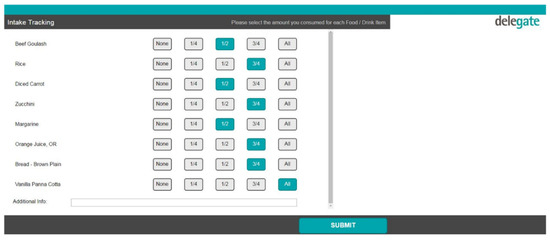Anaphylaxis - severe, potentially life-threatening allergic reaction - can occur within seconds or minutes of exposure to allergens. Multiple cases of anaphylaxis have been described for COVID-19 vaccines.
For the Pfizer/BioNTech vaccine, twenty-one anaphylaxis cases (a rate of 11.1 per million doses administered, later updated as 4.7/million from 28-million-datapoints), were documented in the US after receipt of the first dose of Pfizer-BioNTech COVID-19 vaccine during December 14–23, 2020. 17 of those had a documented history of allergies or allergic reactions, seven of whom had a history of anaphylaxis. 71% of them occurred within 15 min following the first dose of BioNTech vaccine.
Anaphylactic shock to Pfizer vaccine happened in those with history of anaphylaxis to other vaccines (rabies and influenza A(H1N1) vaccine), drugs (prochlorperazine, antibiotics, sulfa drugs), venom (jellyfish sting) or nuts. Out of 21, 4 were allergic to sulfa drugs, 2 were allergic to nuts.
Moderna COVID-19 vaccine caused much fewer anaphylactic episodes (2.5 anaphylaxis cases per million doses administered for 27 million datapoints), but there were similarities with Pfizer cases. Out of 10 cases described in MMWR, 4 had Penicillin allergy (like 1 Pfizer case). Also, in common were allergies to sulfa drugs and azithromycin. A Kansas woman who died 2nd day after experiencing anaphylactic reaction to her first Moderna shot, previously had an allergic reaction to Albuterol, a drug used to treat wheezing and shortness of breath.  The Pfizer-BioNTech vaccine contains lipid nanoparticles one of which is “pegylated” (Polyethylene glycol, molecular weight 2000 Da, abbreviated to PEG2000). The Moderna mRNA vaccine also includes a different pegylated lipid (also a PEG2000). Polyethylene glycols, also known as macrogols, could be causing serious allergic reactions ins some people.
The Pfizer-BioNTech vaccine contains lipid nanoparticles one of which is “pegylated” (Polyethylene glycol, molecular weight 2000 Da, abbreviated to PEG2000). The Moderna mRNA vaccine also includes a different pegylated lipid (also a PEG2000). Polyethylene glycols, also known as macrogols, could be causing serious allergic reactions ins some people.
One of the culprits of anaphylaxis in Astrazeneca could be polysorbate 80, used in the formulation of protein-based biopharmaceuticals, cosmetics, skin-care products, chewing gum and foods (ice creams and puddings).
41 reports of possible anaphylaxis were seen among around 5 million vaccinations in the United Kingdom. Four cases of people potentially experiencing anaphylactic reactions within 30 minutes of receiving the AstraZeneca vaccine have been reported in Queensland and one case with fatal outcome happened in Georgia.
Polysorbate 80 is also an ingredient in Johnson and Johnson vaccine. For this vaccine, no cases of anaphylaxis were reported in ~22,000 participants of phase 3 clinical trial who received it. Five patients reported developing hives within a week. There was one case of what was considered severe “a hypersensitivity reaction,” but it was reportedly not related to anaphylaxis. Last month, however, one individual in South Africa developed anaphylaxis. No details have been published yet.
According to the CDC, polysorbate 80 is an inactive ingredient in many viral vector vaccines for influenza (Fluarid, Fluax, etc), rotavirus, shingles, Hepatitis A, Hepatitis B, HPV, and meningococcus. Polysorbate 80 is also an ingredient in COVID-19 Sputnik V vaccine from Gamaleya Research Institute.
REFERENCES
Turner PJ, Ansotegui IJ, Campbell DE, Cardona V, Ebisawa M, Yehia EG, Fineman S, Geller M, Gonzalez-Estrada A, Greenberger PA, Leung AS. COVID-19 vaccine-associated anaphylaxis: A statement of the World Allergy Organization Anaphylaxis Committee. World Allergy Organization Journal. 2021 Feb 3:100517.
Allergic Reactions Including Anaphylaxis After Receipt of the First Dose of Pfizer-BioNTech COVID-19 Vaccine — United States, December 14–23, 2020. MMWR Morb Mortal Wkly Rep 2021;70:46–51. DOI: http://dx.doi.org/10.15585/mmwr.mm7002e1external icon.
CDC COVID-19 Response Team; Food and Drug Administration. Allergic Reactions Including Anaphylaxis After Receipt of the First Dose of Moderna COVID-19 Vaccine - United States, December 21, 2020-January 10, 2021. MMWR Morb Mortal Wkly Rep. 2021 Jan 29;70(4):125-129. doi: 10.15585/mmwr.mm7004e1. PMID: 33507892; PMCID: PMC7842812.
Kounis NG, Koniari I, de Gregorio C, Velissaris D, Petalas K, Brinia A, Assimakopoulos SF, Gogos C, Kouni SN, Kounis GN, Calogiuri G. Allergic Reactions to Current Available COVID-19 Vaccinations: Pathophysiology, Causality, and Therapeutic Considerations. Vaccines. 2021 Mar;9(3):221.
Public Health England. COVID-19: the green book, chapter 14a.
Moghimi SM. Allergic Reactions and Anaphylaxis to LNP-Based COVID-19 Vaccines. Molecular Therapy. 2021 Mar 3;29(3):898-900.



